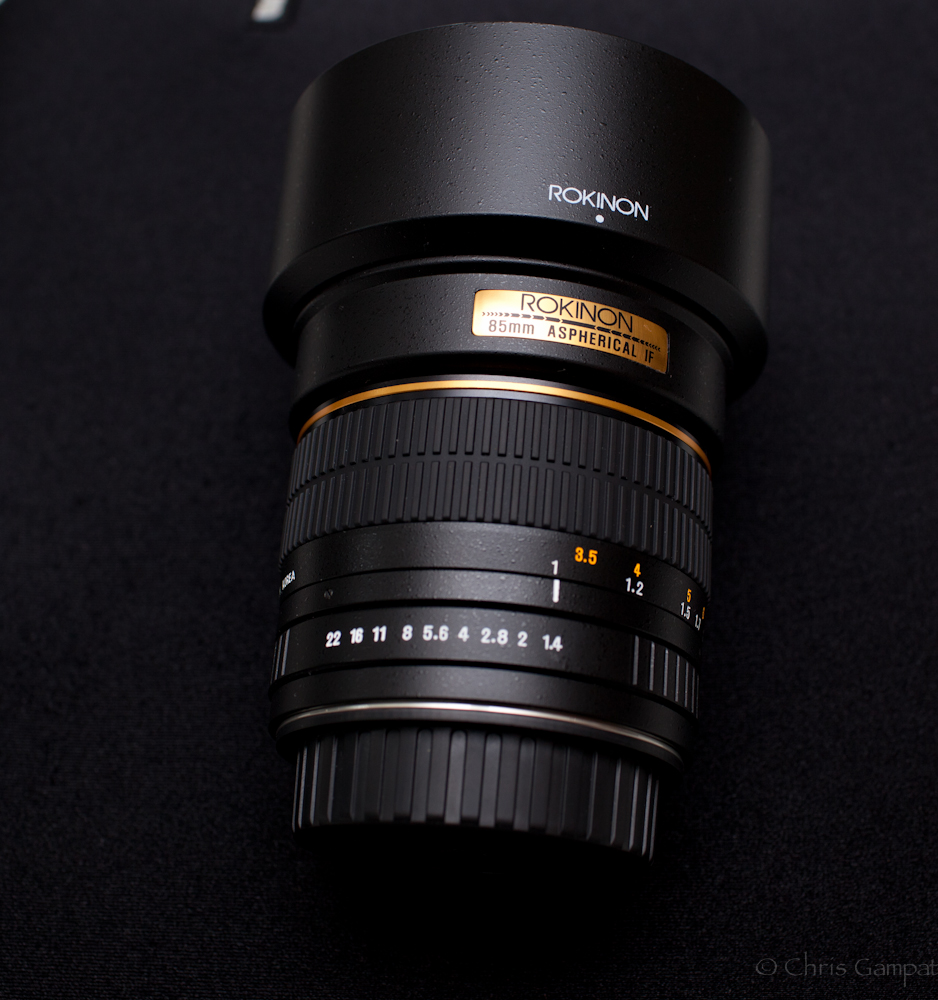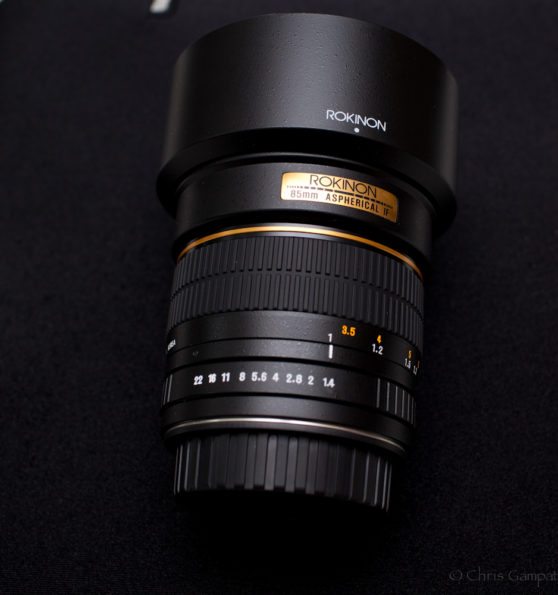After some long and extensive reviewing, the Rokinon 85mm F/1.4 has been returned and we’re finally finished. To refresh, the Rokinon is a budget level 85mm lens with manual focus. But is it the right lens for you?
Complete Postings
Day 1– Breaking the lens in
Day 2– Street photography with the Canon 5D Mk II
Day 3– The Ring Flash test
Day 4– Impressions with video
Day 5– Natural light portraits
Ergonomics
The Rokinon 85mm F/1.4 feels like a lens Zeiss would have made if they were targeting the budget range of users. The lens, which hails from South Korea, has a tough plastic build and actually feels fairly light in the hand. When mounted to the Canon 7D or 5D Mk II, the lens feels balanced and will be a joy to hold for long periods of time.
Though it does not have the full metal build of many of the Zeiss lenses, one can think of this lens as something in between Canon’s glass and Zeiss’ glass. In fact, I’d liken it to the build quality of some of the recent Sigma EX glass.
Yes, this lens has an aperture ring. That’s something many Canon lenses lack. The Zeiss cinema primes, like the 85mm I had a hands-on with, have a T-stop ring. However, this is one of the few lenses for the system I’ve seen with an aperture ring. That means that you can pretty much forget about the back dial.
The closest thing to this lens would be the Zeiss 85mm cinema prime for video. The problem with this lens was that it was even harder to focus and was designed to be used with a follow focus and on a tripod or stabilizer of some sort. It’s also much heavier than the Rokinon lens and quite a bit more expensive. What you’re paying for though is better build quality, better focus falloff, and T stops vs F stops (which are much more accurate).
But once again, for the price point of the Rokinon, you can’t beat it.
Focusing
Focusing is all done manually using the giant focusing ring. Photographers that have complained about the focusing rings on Canon lenses being “wimpy” (and you know who you are, and so will all those that read forums often) will feel right at home with a lens like this. The focusing is smooth but not too dampened. It is still possible to get through the entire focusing range of this lens very quickly and with fair accuracy.
For the best results, I’d either switch this lens into Live View mode or get a split focusing screen. Videographers will find this lens a joy to use not only because of the focusing, but also because of the manual aperture ring.
Stopping the lens down makes your viewfinder very dark and sometimes even unusable which makes focusing tough to do.
I still much prefer the autofocusing of the Canon 85mm F/1.8 (reviewed here), but that could be because I do not have a split focusing screen. You may also be interested in Mike’s review of the Sigma version.
Sharpness
Wide open, the lens is super sharp: providing you can focus it correctly and accurately. When stopped down, it only becomes even sharper.
Image Quality
Overall, the quality of the Rokinon 85mm is very, very good and I actually believe that wide open, it’s better than my Canon 85mm F/1.8. The lens has some of the best skin tone renderings I’ve seen to date and also renders other colors very well. In contrast from my Canon lenses, the colors are a bit more muted and less punchy but there is a bit more contrast to the images.
Most users overall will be very pleased by what this lens can accomplish, but the ones that will most benefit are portrait photographers and videographers.
Conclusions
The Rokinon 85mm went back to the loaner for a couple of reasons:
– Hard to focus at times
– Doesn’t play well with EXIF data
– The aperture ring nearly blacks out my viewfinder.
– I already own the Canon 85mm F/1.8.
– When switching into video mode on the Canon 7D, it won’t register that there is a lens on the camera. So you’ll have to press the record button to switch it into the full video mode.
However, that doesn’t keep it from being a lens that’s near the top of the line. For the money, many photographers are bound to swarm to it due to the great construction, small size, light weight, and sharpness. With the supply of products coming out of Japan being limited as well at the time of writing this, the South Korean lens looks a bit more tempting.
I’d purchase this lens if I had a split focusing screen or if I was more of a videographer. Otherwise, the Canon F/1.8 version is still quite good and worth paying the extra money for.
Gear Used
Please Support The Phoblographer
We love to bring you guys the latest and greatest news and gear related stuff. However, we can’t keep doing that unless we have your continued support. If you would like to purchase any of the items mentioned, please do so by clicking our links first and then purchasing the items as we then get a small portion of the sale to help run the website.





